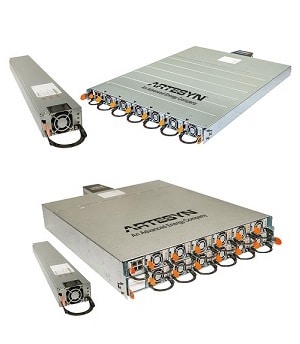- Designed for 48-volt data centre infrastructure
- Gives reduced conduction losses for better thermal performance

Traditionally, data centre racks have been using 12-volt power shelves. But to achieve higher performance, better compute and storage platforms are required, which demand more power. This results in the generation of very high currents.
Therefore, Advanced Energy has announced that its Artesyn Embedded Power product group is introducing a new Open Compute Project Open Rack version 3 (OCP ORv3) power shelf, designed to support 48-volt data centre infrastructure. This shift from 12-volt to 48-volt power distribution aims to reduce the current drawn by a factor of four and reduce conduction losses by a factor of 16, hence resulting in significantly better thermal performance, smaller busbars and increased efficiency.
Scalable power distribution
This new standards-based design is intended to create a common power platform for multiple customers across deployments, increasing adoption and creating economies of scale to benefit the whole OCP community.
“We are highly engaged in the development of OCP Open Rack standards and specifications, with input from multiple leading hyperscale data centre customers,” said Brian Korn, senior director, data centre solutions for Advanced Energy’s Artesyn Embedded Power product group. “We are enabling the market adoption of this next generation 48-volt power distribution architecture through collaboration across multiple companies to address shared challenges, offering OCP compatible solutions while retaining our differentiating intellectual property.”
The new OCP ORv3 power shelf will be a key technology enabler in the growing adoption of 48-volt rack power distribution in hyperscale data centres. Artesyn products deliver rack power solutions such as 1OU and 2OU power shelves and in the embedded power market, which is fast-growing thanks to the acceleration of data generation and use, growing cloud adoption across enterprise IT and an increased workload driven by artificial intelligence and machine learning.






